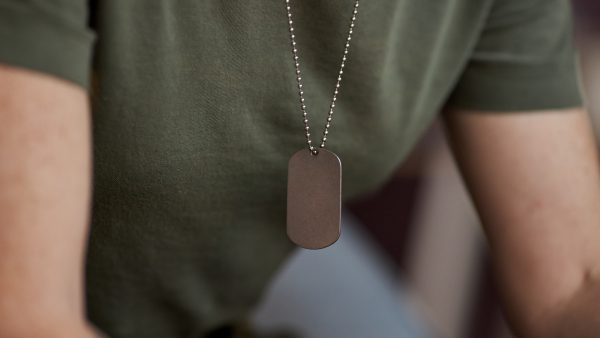Looking for Expert-Level VA Claim Answers?📱Call Us Now! 737-295-2226
More about Veterans with Service Dogs. In my last blog, Veterans with PTSD and service dogs, I discussed what service dogs are and how service dogs can help Veterans with mental health conditions. In this continuation, the question of who qualifies for a service dog and how to apply for a service dog will be discussed.
According to Americans with Disability Act (ADA), a person must have a diagnosed disability that substantially limits their ability to perform one or more major life task(s) without assistance. This limitation can affect their physical needs, as well as the overall quality of their life or wellbeing. As it pertains to veterans, there is a critical need and benefit of using dogs in the rehabilitation of veterans with physical disabilities, post-traumatic stress disorder (PTSD), other mental health conditions, and/or traumatic brain injury (TBI).
How to apply for a service dog?
There are many organizations out there eager to help; while this is a great thing, it can also be overwhelming when trying to figure out where to start. The reality is that there are many ways to apply for a service dog. After doing some research into a few organizations, I found that several serve their local veterans, but some work with veterans remotely and from all over the nation.
The first step is to actually fill out the application. This seems like the easiest step; but for some, it’s actually the most daunting. I know from experience that the idea or thought of having to retell, relive or dig up things that have been suppressed for years can cause severe anxiety. Rest assured this is not the case.
Most organizations will require you to read through their specific qualifications and eligibility criteria for a service dog. Once the application is submitted, typically, a trained professional will review your information to determine whether a service dog will be a good fit for your life.
What do I need to file?
Many organizations require documentation, usually, this includes a formal diagnosis by a medical professional, a copy of DD-214, a VA disability rating sheet and/or proof of military service, and a letter of recommendation. It varies from this point. Many organizations require a home visit and an initial meeting between the service dog in training (SDiT) and the veteran. They will vet out any personality conflicts and make a final determination on whether the partnership will be viable or not.
Once the veteran has been successfully partnered with their potential SDiT, there is an intensive training regimen required. Some organizations require a two-week in-person class that will demonstrate basic commands, followed by an additional week-long training course to customize the training of the service dog to the needs of the veteran. Other organizations will train the future service dog until he/she is ready to graduate, which may well be a yearlong process; then they will contact the veteran and do between a 3-7 day orientation between the newly graduated service dog and the veteran. This will vary from organization to organization. Once all the vetting, introduction, and training have all been completed, you’ll be ready to go home with your new partner!
Because of the number of organizations available to provide and train service dogs, there are no set standards as to who can apply for and partner with a service dog. In the list below are the most common requirements I found when looking into these organizations:
- Proof of service in the United States’ military, some organizations do require an honorable discharge
- A commitment to a training program, and maintaining the lifelong training of your service dog
- Ensuring that the veteran is able to meet the physical and emotional needs of the service dog, as well as maintaining the overall wellbeing, including paying for regular expenses; such as food, treats, veterinary visits, etc.
- Must have a diagnosis from medical professional
- Must have a stable/safe living environment for the service dog
- Must be able to attend training classes with the service dog in training, including monthly, weekly, or daily interactions until both service dog in training and the veteran show proficiency in day-to-day tasks and interactions
**Please keep in mind that every organization maintains different standards, and these may vary based off of what organization you apply with.
There is no law prohibiting you from obtaining and training a service dog on your own; however, this can be costly. On average, in order to obtain a credentialed service puppy, plus training, and lodging, the cost is approximately $20,000. Some organizations do allow you to provide your own dog for training; while others reduce the cost by working with shelter dogs and rescues. In general, the training, even with your own dog, can run around $10,000. There are scholarships and grants available; however, they are very limited.
My experience with a service dog
My journey to getting a service dog is currently taking place with MK9s Service Dogs, based out of Northern Virginia. There was an application that I had to complete, which was comprised of an initial application form to provide the organization with key information about me, a survey of the ways I believe I could benefit from a service dog, background information on my daily lifestyle, home life, family information, my VA benefit summary statement, and my DD-214.
After passing the first stage there was a supplemental questionnaire to cover my medical history, program agreements, my financial standing, medical authorization release, and a therapist letter, a spouse letter, and some medical records. (It sounds like a lot but it’s a process that is carefully carried out for good reason, as you would expect).
After passing this stage, an in-person interview was conducted with my wife by the group and a home suitability assessment was completed. Once all of this was done, with a secured sponsorship in hand, the group began to search for a potential puppy to begin training. I met my 8-week old SDiT, Legend, named after Navy Seal Chris Kyle. Legend is pictured in this article.
Our training will last 15-18 months from start to finish. As of right now, we are halfway there! When our training is complete, then he will finally be placed with me. He is currently with a volunteer canine mentor who is training him. I meet with them twice a month for training. This is more of a gradual process that has been very beneficial for me. It has enhanced my therapy, allowed me to grow and learn with him, work on some things to prepare to have him in my home, and also given me the ability to speak openly about this (as I am here and as I have with my family), which I would not have been able to do before I met him. I will follow up with my detailed experience in another blog.
Groups
With all of this covered, the reality is that there are many organizations that provide or train service dogs for veterans with PTSD. Below is a list of a few that I came across:
- MK9s Service Dogs
- Patriot Paws
- America’s VetDogs
- Companions for Heroes
- Freedom Service Dogs
- Semper K9
- NEADS
- Working Dogs for Vets
- 4 Paws for Patriots
- Paws for Purple Hearts
As always, please feel free to reach out if you need anything. I would be happy to chat with you about this process or encourage you along in your journey. Additionally, if you do not already have a service-connected disability, let me know and we can get started on your claim.
Deserve a HIGHER VA Rating? WE CAN HELP.
Join our premier education-based membership program, VA Claims Insider Elite, connect with an expert-level Veteran Coach (VC) within minutes, and finally get the rating you deserve. Click the button below to get started.
About the Author

About VA Claims Insider
VA Claims Insider is an education-based coaching/consulting company. We’re here for disabled veterans exploring eligibility for increased VA disability benefits and who wish to learn more about that process. We also connect veterans with independent medical professionals in our referral network for medical examinations, disability evaluations, and credible independent medical opinions and nexus statements (medical nexus letters) for a wide range of disability conditions.



